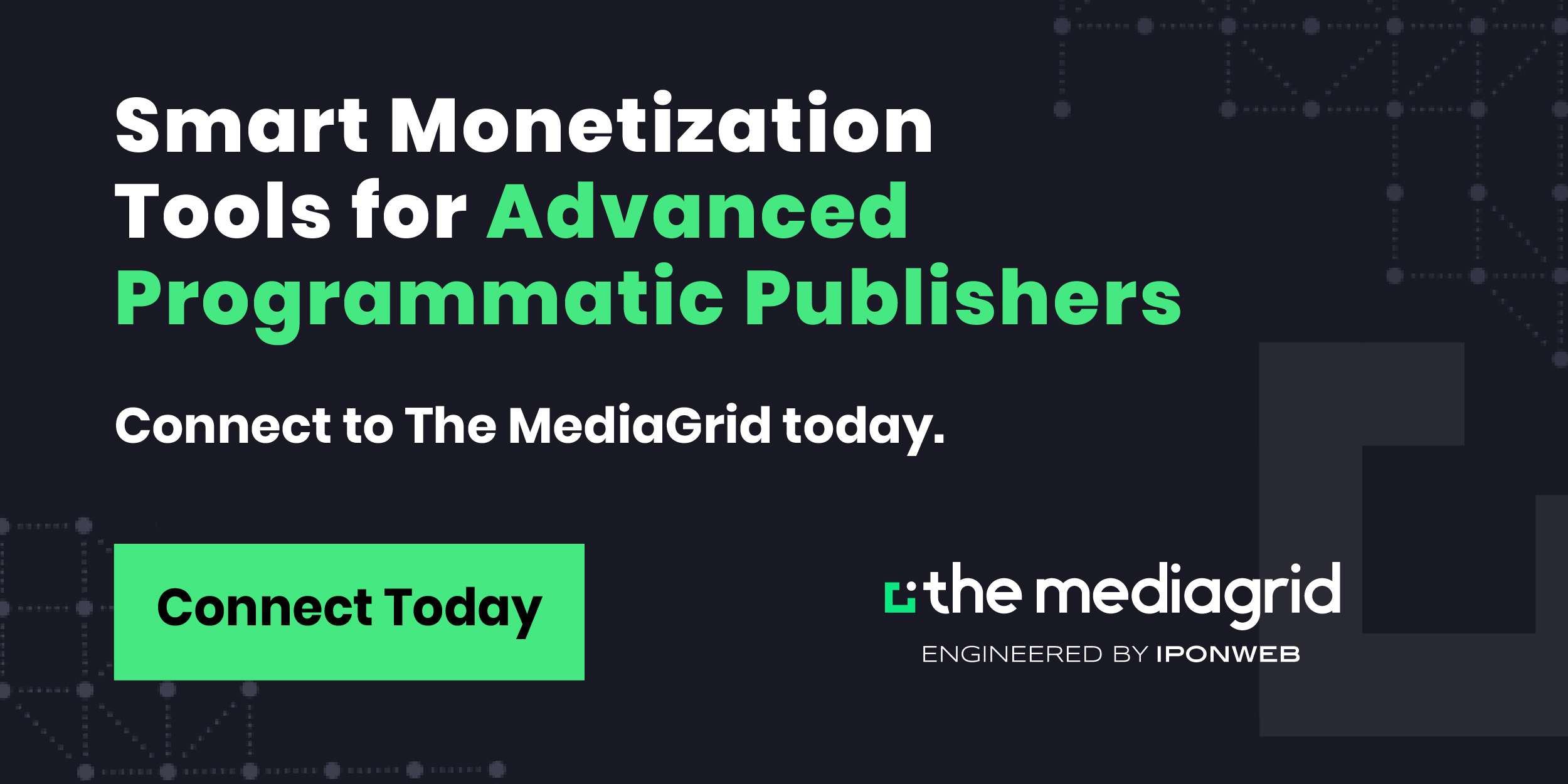 |
|||||||||||||||
|
|||||||||||||||
| Saved By The Contextual Advertising? |
| As third-party cookies continue their farewell tour, contextual advertising slowly makes its way towards the throne but will marketers, brands (basically, buyers) and agencies immediately jump on the bandwagon? According to a new study from GumGum and Brand Innovators, 49% of marketers are looking to contextual advertising to replace cookies in their marketing efforts. Exactly how that's implemented is still TBD, as many marketers are giving the Kanye shrug 🤷🏾♂️, due to a lack of education. In the study, those well acquainted with contextual advertising identified its key benefits as discerning brand-suitable environments based on contextual targeting rather than keywords (38%), limiting media placements to where consumers are open to the brand message (23%), and finally the ability to run dynamic ad copy (11%). However, the biggest hurdle may be a lack of knowledge as only 27% of respondents were “very familiar” with contextual advertising vs. 41% who admitted they were neither familiar or overly unfamiliar. Looks like it's time for ad ops teams to put on their collective cape to save the day — educating sales teams everywhere. Whoosh! |
| Listen, the advertising ecosystem has been turned upside down in recent years between preparing for a cookieless world, and growing concerns around brand safety and privacy. But, we're all figuring it out as we go. Even Google just pivoted from FLoC to Topics API as the possible cookie replacement. Contextual advertising is what's old is new again, and that's what makes it so scary. How does it fit into what the advertising ecosystem has become, especially as programmatic takes center stage? And the elephant in the room is always: "But does it scale?" The industry needs a refresher on its benefits, as well as how to actually leverage it. As we previously stated, publishers have a huge advantage here in terms of educating the advertising community while amplifying their own content opportunities. Does this mean behavioral gets completely thrown out? Of course not. But it does mean we could be looking at layering in contextual in a multi-faceted approach to strengthen the buyer-seller relationship. There’s an opportunity to work together to create timely and relevant advertising experiences for users that complement their current browsing behaviors. It's not like publishers need anything else on their plates, but putting the effort in on contextual now could put them back in the driver's seat and eventually lead to long-term success. |
| From FLoC to Topics – Has the Bird Flown? | ||
| Just last week, Google announced that its third-party cookie replacement initiative, Federated Learning of Cohorts (FLoC), was to be replaced with a new proposal, called Topics. Rather than assigning users to various interest-based cohorts, Topics would leverage browsing data to understand a user’s top 5 interest categories from a predefined list of 300. It then randomly selects one of those categories for each of the prior three weeks to share with the publisher, who in turn can pass to advertisers for purposes of ad targeting. According to Google, Topics provides not just more privacy for consumers, but also control, as users will be able to opt-out of certain Topics or out of the Topics API altogether. |
||
| While Google’s rethink on FLoC to provide users with more privacy is commendable, it also indicates that Topics is unlikely to be the silver bullet; it is a more general solution that may not provide media buyers with the targeting precision that they are looking for. That said, it does create an opportunity for publishers, who know considerably more about their users than what Topics can support. For example, while Topics may observe a user visiting a cooking site, and assign it a high-level Topic like Cooking, the publisher will know that the user was reading vegan dessert recipes. For the advertiser, say the manufacturer of vegan soy milk, being able to target audiences against the more granular category makes a huge difference. By combining this level of user insight with other 1st- and 3rd-party data tools, Publishers are in a strong position to supercharge their inventory to create unique value for advertising partners – provided they have the infrastructure to make it happen. The MediaGrid is a next-generation SSP developed by IPONWEB, built from the ground up to give publishers more tools to activate their data securely to satisfy advertiser buying goals and maximize audience yield. By connecting to The MediaGrid, publishers can extend the value of their data to third-party supply and unlock new revenue streams – without giving up control of their proprietary assets. |
||
|
||
 |
| Fee Fi Fo Fum — The Next Ad Tech Giant Emerges |
| Microsoft is making its presence known after a monstrous offer to acquire Activision Blizzard for ~$70 billion in an all-cash deal earlier this month. If the deal goes through, this acquisition would be marked as the highest dollar amount ever paid by a tech company and would add fan-favorite games like Call of Duty, Overwatch, Candy Crush and World of Warcraft to Microsoft’s Xbox catalog. But, let's not forget that right before the winter holiday szn, Microsoft acquired Xandr (formerly known as AppNexus and a longtime Microsoft partner) from AT&T. With a very successful 2021 (self-reported at more than $10 billion) and highly anticipated growth, is Microsoft bulking up to become the next ad tech giant? |
| We see you looking all askew at Microsoft ?, dismissing it as an antiquated platform for office employees who still work in cubicles (or perhaps, soon, the Metaverse) using Outlook. But is that really all Microsoft is? Those “outdated” assets under Microsoft's umbrella are in fact significant ad businesses — earning $8.5 billion in search ad revenue between June 2020 and June 2021. In October 2021, Microsoft Edge’s share of the web browser market exceeded 6% which is up from 0% just two years ago. And then let's layer in LinkedIn (yes they own that too) whose engagement hit a record high in Q4 2021 thanks to the great resignation — surpassing a $10 billion run rate and contributing to a 21% leap in quarterly profits for the parent company. Microsoft’s arsenal may seem to lack uniformity, with an unlikely combination of popular acquisitions and not-so-popular products, but the method to all of this madness may still be underway. Could these recent acquisitions be the pieces to a puzzle that quietly catapults Microsoft above its big tech rivals? Will they go after a bigger market share of programmatic? Do they want to dominate the Metaverse? Only time will tell, but it's best we steady our gaze on Microsoft as they're moving swiftly. |
| LG Ad Solutions Guarantees CTV Outcomes with Third-Party Measurement on Top |
| Just in time for the US upfront season, LG is committing to no advertising waste. Last week, LG Ad solutions launched Guaranteed Outcomes, which promises brands will only pay for campaign performance once select KPIs are met. This initiative will be available across LG’s 20 million U.S.-connected TVs, mobile and web. The program will initially offer guarantees on reach and frequency, as well as demographics (age, gender, ethnicity, household income, education, presence of children). Additionally, video completion rate (VCR) will be guaranteed as advertisers won't have to pay unless video ads are viewed to 100%. Conversion metrics are also on the table beginning with app installs. This will be extended to tune-in, web visits, and physical location visits in the coming months. Guaranteed Outcomes is also answering the need for better CTV measurement. The program is being verified by third-party measurement partners, most of which are MRC-accredited. The list includes iSpot for reach and frequency, Experian for demographics, Google Ad Manager, Innovid, FlashTalking Sizmek, and others. |
| CTV has grown at an immense rate in a very short period of time. While it’s arguably the hottest media in the marketplace right now, its popularity comes with great scrutiny. Buyers are pointing out the medium’s pain points like fragmentation in the form of duplicated reach, ad fraud, and measurement. Although significant budgets are still pointed in the direction of CTV vs. linear, the weight of these pain points could eventually limit or stall dollars altogether. LG’s unveil comes at a perfect time as this offering could separate them from the noise and position them as a hero just in time for upfront season. Universal McCann and Dentsu Media have already expressed support of LG’s efforts, although any potential partnership details have not been disclosed. While this makes LG’s inventory more attractive, it also strengthens its walled garden. The potential of waste management is somewhat resolved but unless a buyer is exclusively partnering with LG, it maintains complexity levels for the community as buyers are trying to consolidate and manage campaigns holistically. |
| @{optoutfooterhtml}@ |












